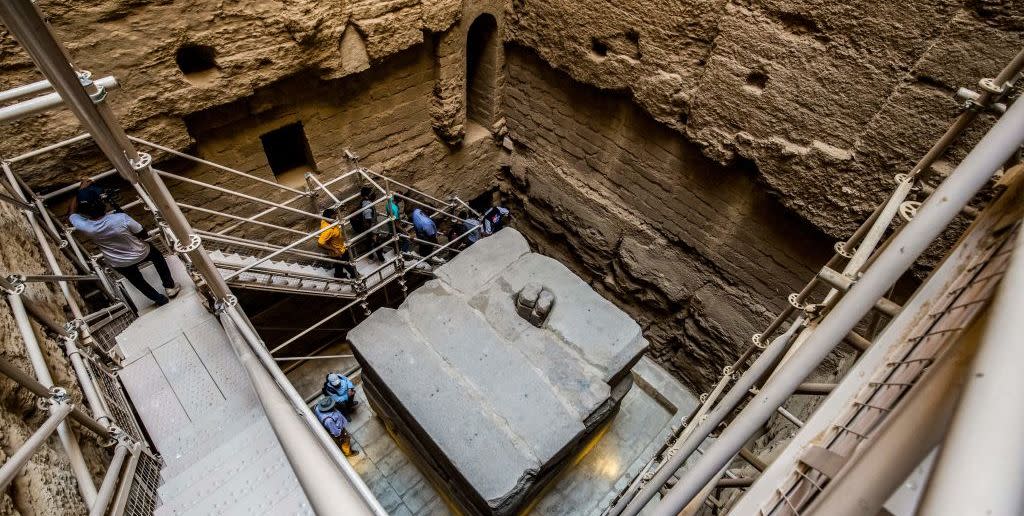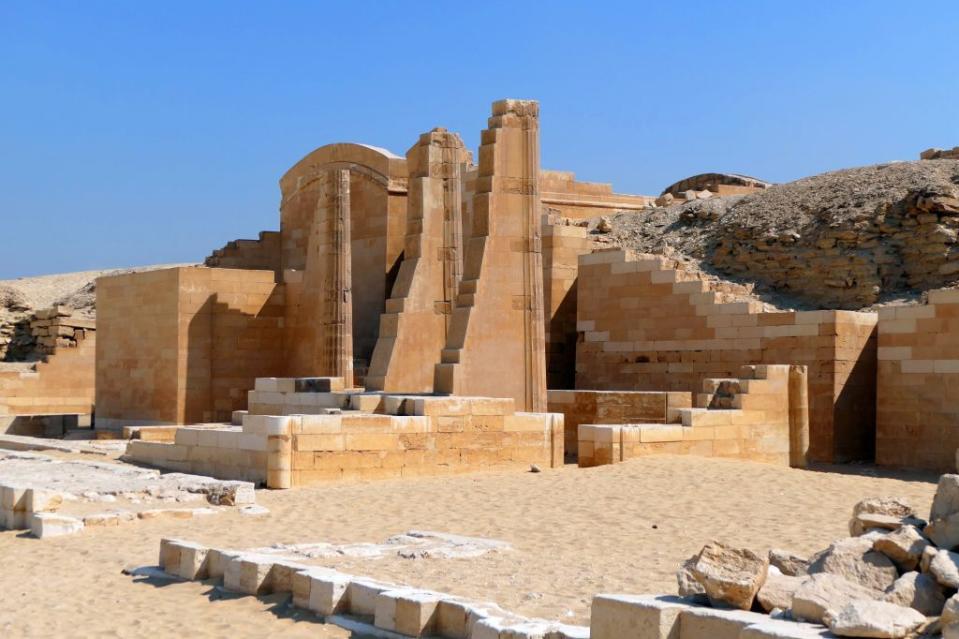Archaeologists Unearth Nearly 300 Egyptian Mummies in Underground Tunnels

- Oops!Something went wrong.Please try again later.
Hundreds of mummies were found within the tunnels in and around King Teti’s pyramid.
The discovery also uncovered a queen’s pyramid, which has since been tied to Neith—a previously unknown queen to Egyptian history.
The majority of the find is believed to be from the New Kingdom period—roughly the 6th century B.C. to the 11th century B.C.
Archeology in Egypt is a treasure trove that keeps on giving. Over the past two years, researchers have been unearthing relics from the Saqqara site, about 12 miles from Giza and over 20 miles from Cairo.
You love mysteries of the past. So do we. Let’s dive deep into them together—join Pop Mech Pro.
There, archaeologists recently uncovered nearly 300 mummies and other miscellaneous riches within a network of tunnels, shafts, and rooms 60 feet below some of the oldest pyramids in Egypt. Add in the discovery of a new queen’s pyramid, attributed to the previously unknown Queen Neith, and archeologists are having a true field day.
A Fresh Focus on Saqqara
Donald Ryan, a humanities professor at Pacific Lutheran University, known for his research on the Valley of the Kings, tells Popular Mechanics that Saqqara is an area most well-known for its Step Pyramid of Djoser—the first pyramid the Egyptians ever built. For that reason, New Kingdom mummies are an intriguing find in the Old Kingdom site.
Unearthing a pyramid of a previously unknown queen added richness to the recent bounty. Since finding the pyramid, researchers realized the queen was named Neith, though so far, not much is known about her; Egyptologist Zahi Hawass, part of the team on this project, described her only as a new queen added to the rosters of Egyptian history. Queens from the First Dynasty were named after Neith, an Egyptian goddess from 3000 B.C. and the patroness of Sais.
“I really believe that this year and next year, this site is going to be the most important site in Egypt,” Hawass tells NBC News. “I always say that we found until now only 30 percent of our monuments are still there, 70 percent are buried underneath the ground.”
The underground tunnels include 22 interconnected shafts, some dipping as deep as 60 feet below the surface, Hawass tells Live Science.
Artifacts Link Egypt’s Deeper Past to the New Kingdom
Along with the mummies and coffins—some connected to King Tut’s generals and advisors—archeologists also unearthed plenty of artifacts, including ceramic amulets and papyrus documents, many related to King Teti, founder of the Sixth Dynasty of ancient Egypt. King Tut is buried roughly 400 miles away at the Valley of the Kings, a royal cemetery from the New Kingdom.
The connection to King Teti, Hawass explains, is likely because he was worshipped in the New Kingdom, between roughly the 11th century B.C. to the 6th century B.C.—over 1,000 years after his death in 2181 B.C. Worshipers would want their burial sites near his tomb, Hawass says.
“Burials from the New Kingdom were not known to be common in the area before, so this is entirely unique to the site,” Hawass tells Live Science. “The coffins have individual faces, each one unique, distinguishing between men and women, and are decorated with scenes from the Book of the Dead. Each coffin also has the name of the deceased and often shows the Four Sons of Horus, who protected the organs of the deceased.”
Mummies Invite Further Study

Work exhuming the mummies from the site will continue. Many are apparently in good condition, Hawass says. Archeologists will X-ray the remains to learn what they can about the ages of the bodies at death, or any obvious causes of death.
The preserved nature of the mummies shows that the New Kingdom had mastered the mummification process, Hawass says, including the evolution of coffins, some with two lids and one with a mask of a woman made of solid gold.
The ancient Egyptian method of embalming a dead body to preserve it in as much of a life-like manner as possible started during about 2600 BC, according to the Smithsonian. The practice developed for over 2,000 years until reaching its height during the New Kingdom, the time of King Tut.
During the cataloguing process, some of the newly discovered items could find a new final resting place: the yet-to-open Grand Egyptian Museum in Giza. While many of King Tut’s most famous objects—including the gold death mask of King Tut and Khufu Statue—are displayed at Cairo’s Egyptian Museum, the often-delayed Grand Egyptian Museum is now on track to open in 2023 in Giza, offering a home to many of the artifacts found underground in Egypt.
You Might Also Like

